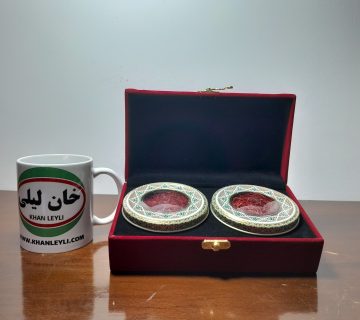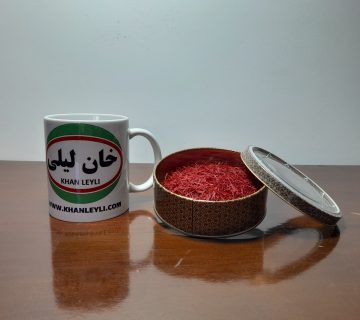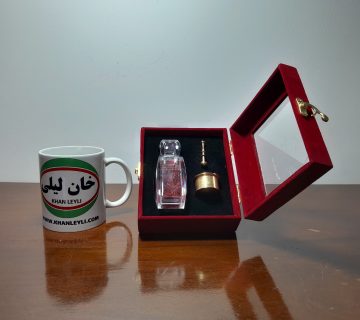Saffron, the prized spice derived from the Crocus sativus flower, has captivated culinary enthusiasts and connoisseurs alike for centuries. One of the key considerations when purchasing saffron is its color, an attribute that not only influences its visual appeal but also serves as an indicator of quality. In the vibrant world of saffron, nuances of color play a crucial role in determining the spice’s purity and potency. Let us explore why the hue of saffron is a vital factor when selecting the best strands for your culinary ventures.
The captivating crimson hue of saffron is primarily attributed to the presence of natural pigments such as crocin, crocetin, and picrocrocin. The intensity of these pigments contributes to the spice’s rich color profile, ranging from a deep red to a golden yellow. When selecting saffron, the rule of thumb is to opt for strands that exhibit a vivid and uniform color. This not only enhances the visual appeal of your dishes but also indicates a higher concentration of the valuable compounds responsible for saffron’s distinctive flavor and aroma.
– Deep red saffron strands are often considered the most desirable. This color is indicative of a higher concentration of crocin, the compound responsible for saffron’s red hue. The presence of ample crocin enhances both the spice’s color and its ability to impart a robust flavor and aroma to dishes.
– While red saffron is highly prized, some connoisseurs appreciate the allure of golden yellow saffron. This color is still an indicator of quality, showcasing a balance of crocin and crocetin. The golden strands are often milder in flavor, making them a versatile choice for a wide range of culinary applications.
When purchasing saffron, it is crucial to examine the consistency and vibrancy of its color throughout the strands. Avoid saffron that appears dull, has uneven coloring, or shows signs of discoloration, as these may indicate impurities or inferior quality. Opt for saffron with a rich, uniform hue, whether it leans towards deep red or golden yellow, as this is a reliable sign of a premium product.
In the colorful world of saffron, the choice between rich red and golden yellow strands is a matter of personal preference. The best saffron to buy is one that exhibits a vibrant and consistent color, indicative of its purity and potency. As you embark on your culinary journey with this exquisite spice, let the captivating hue of saffron be a testament to the quality and authenticity of your culinary creations.
Golden Threads: Unveiling the Pinnacle Properties of Premium Saffron
Saffron, the exquisite spice derived from the delicate Crocus sativus flower, is celebrated not only for its distinct flavor and aroma but also for the mesmerizing golden hue it imparts to dishes. In the realm of culinary treasures, premium saffron stands as a beacon of excellence, distinguished by its exceptional properties. Let’s embark on a journey to unravel the golden threads that make premium saffron an unparalleled ingredient in the world of gastronomy.
- Vibrant Coloration:
At the heart of premium saffron lies its captivating color, a rich tapestry of reds and golds that elevates the visual appeal of any dish. The spice owes its hue to the presence of natural pigments, primarily crocin, which imparts the intense red tones, and crocetin, responsible for the golden shades. The vibrancy and consistency of color within saffron strands are key indicators of quality, as premium saffron showcases a deep, uniform hue, a testament to its purity and potency.
- Potent Flavor Profile:
The golden threads of premium saffron are not merely ornamental; they carry within them an unparalleled flavor profile. The spice boasts a complex amalgamation of earthy, floral, and slightly bitter notes, creating a symphony of flavors that enrich both sweet and savory dishes. The intensity of saffron’s taste is directly correlated with the concentration of essential compounds, making premium strands a must-have for those seeking an authentic and robust culinary experience.
- Aroma of Distinction:
Close your eyes and inhale the sweet, heady fragrance of premium saffron, and you’ll be transported to a realm of culinary luxury. The aroma, derived from the volatile oils within the spice, is a hallmark of its quality. Premium saffron releases a distinct and potent fragrance, a prelude to the sensory journey that awaits in the kitchen. Whether used in delicate desserts or savory stews, the aroma of premium saffron adds an olfactory dimension that is truly exceptional.
- Purity and Ethical Sourcing:
The journey of premium saffron begins with conscientious cultivation and harvesting. Ethical sourcing practices, including hand-picking the delicate flowers and meticulous drying processes, contribute to the spice’s purity and potency. The absence of additives or adulterants ensures that each strand of premium saffron is a golden gem, ready to infuse dishes with its authentic essence.
- Health and Well-being:
Beyond its culinary allure, premium saffron has been revered for its potential health benefits. Rich in antioxidants and known for its anti-inflammatory properties, saffron has found its place not only in kitchens but also in traditional medicine. When choosing premium saffron, one can embrace the golden threads as not just culinary delights but also as contributors to a holistic approach to well-being.
In conclusion, the golden threads of premium saffron weave a tale of culinary opulence, with each strand embodying the essence of quality, authenticity, and sensory delight. Whether adorning a festive biryani, enhancing the flavor of a delicate risotto, or infusing a dessert with sophistication, premium saffron stands as an indispensable ingredient in the hands of discerning chefs and home cooks alike. So, the next time you encounter those golden threads, savor the moment, for you hold in your hands not just a spice but a symbol of culinary excellence.
How color effects the quality of saffron
Saffron, often referred to as the “red gold,” is not only esteemed for its distinct flavor and aroma but also for the vibrant color it imparts to dishes. The hue of saffron is a crucial factor influencing its quality, serving as a visual indicator of the spice’s purity, potency, and overall excellence. In this essay, we delve into the intricate relationship between color and the quality of saffron, unraveling the secrets behind the chromatic symphony that defines this revered spice.
The mesmerizing color of saffron is a result of the presence of natural pigments, primarily crocin and crocetin. These pigments not only contribute to the spice’s visual appeal but also play a vital role in determining its flavor, aroma, and overall quality. The spectrum of saffron hues ranges from a deep red to a golden yellow, with each shade conveying specific characteristics about the spice.
– The deep red hue in saffron is a reflection of a higher concentration of crocin. Strands with this intense color are often considered superior in quality. The richness of red saffron signifies not only a visually appealing spice but also a higher potency, translating into a more robust flavor and aroma when incorporated into culinary creations.
– Saffron with a golden yellow hue is indicative of a balance between crocin and crocetin. While not as intense as its red counterpart, golden saffron still possesses a desirable color profile. Striking a harmonious balance, these strands offer a milder flavor and aroma, making them versatile for a range of culinary applications.
– Premium saffron is characterized by the uniformity of its color throughout the strands. Inconsistencies or variations in color may suggest impurities, such as the inclusion of other plant materials or artificial dyes. A consistent and vibrant color is a key indicator of the spice’s purity.
– The brightness and luster of saffron strands are additional elements to consider when evaluating quality. A glossy appearance is often associated with well-harvested and properly dried saffron, indicating optimal preservation of its color and flavor compounds.
– Adulterants, including synthetic dyes or other plant materials, can compromise the natural color of saffron. High-quality saffron is free from such additives, ensuring that the observed color is a true reflection of the spice’s inherent properties.
In the symphony of saffron, color emerges as a powerful conductor, orchestrating the harmony of flavor, aroma, and quality. The visual allure of saffron, whether it be a deep red or a golden yellow, is more than a mere aesthetic appeal; it is a testament to the spice’s authenticity and excellence. As consumers and chefs alike navigate the world of saffron, understanding the nuances of color becomes a valuable skill, enabling them to select strands that promise not only a visual feast but a culinary journey marked by the highest standards of quality.
Which country has the best color of saffron
Saffron, the prized spice derived from the Crocus sativus flower, is celebrated for its vivid color, distinct flavor, and aromatic richness. As saffron cultivation spans various regions across the globe, each with its unique climate, soil, and harvesting techniques, the question arises: which country boasts the best color of saffron? In this essay, we explore the diverse saffron landscapes and the characteristics that contribute to the color variations, inviting a journey through the global palette of saffron hues.
Iran, historically the largest producer of saffron, is renowned for its deep red saffron strands. The country’s arid climate and well-drained soil provide optimal conditions for Crocus sativus cultivation. The Iranian saffron industry prides itself on meticulous harvesting and processing techniques, resulting in strands that exhibit a robust red hue, symbolizing the spice’s potency and authenticity.
Spain, a prominent player in the saffron market, particularly in the La Mancha region, offers saffron known for its vibrant red and golden hues. The country’s saffron benefits from ample sunlight and a unique combination of altitude and climate, producing strands with a balance of crocin and crocetin. Spanish saffron is often lauded for its versatility and is a staple in both traditional and modern cuisines.
Nestled in the Himalayan region, Kashmir, India, is another key contributor to the saffron spectrum. Kashmiri saffron is recognized for its long, thick strands with a deep red color. The high-altitude terrains and crisp climate of the region create an environment conducive to the cultivation of saffron with a potent flavor profile and intense coloration.
Greece, particularly in the Kozani region, has been cultivating saffron for centuries. Greek saffron is distinguished by its deep red hue and is often prized for its robust aroma and flavor. The country’s saffron benefits from the rich, mountainous soils and a climate that enhances the development of crocin, contributing to the spice’s captivating color.
Determining the “best” color of saffron is subjective and depends on personal preferences and the intended culinary application. The preference for a vibrant red hue versus a golden yellow one may vary among chefs and consumers. Each country’s saffron offerings bring unique characteristics to the table, offering a diverse range of options for those seeking to elevate their culinary experiences.
In the kaleidoscope of saffron hues, there is no singular “best” color, but rather a rich tapestry of reds and golds woven by the hands of diverse saffron-producing regions. Each country’s saffron tells a story of its terroir, climate, and the dedication of local farmers. The choice of saffron color ultimately rests on the individual’s culinary preferences and the desired impact on the dish. As we celebrate the global richness of saffron, let us savor the beauty of its varied colors, each contributing to the enchanting allure of this precious spice.








No comment